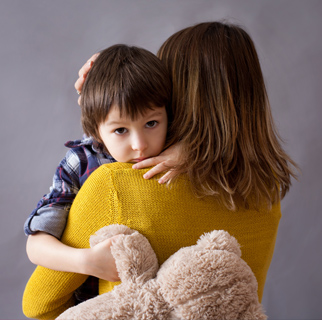Pincer Grasp:
The infant becomes able to use the thumb and index finger to pick up small objects individually. This generally occurs when the child is between 8 to 11 months old.

The progress toward the pincer grasp is easy to monitor for parents. After birth, the infant is likely to exhibit prereaching; which are poorly coordinated swipes made with the hands and arms at objects. The child is most likely to never make contact with the object due to poor eye tracking. This leads to the ulnar grasp around 3 to 4 months old which is the modification of their grasp depending on the object they are reaching for. The infant then will begin to expand the way they manipulate objects by passing them from one hand to another usually around 5 months.
Parents can help their infant achieve the pincer grasp with ease by providing them with moderate stages of stimulus. By introducing the infant to increasingly intricate objects, the infant progressively develops their grasping motor skills.
Language:
Toddlers gain the ability to say their first recognizable word when they are 12 months old. When the child reaches 18 to 24 months, they have expanded their vocabulary from approximately 50 to 250 words. At this age the toddler is also able to join two words together. These stages can come without warning, but there are ways to see how close they are to achieving spoken language.
The infant first stage into language is cooing/ooing. The child then begins to babble, and participate in turn taking activities with the parent. The infant starts using preverbal gestures to accompany their babbles, and then they produce their first recognizable word.
Parents can help their child reach a greater level of language proficiency by actively talking with their children. The infant will not know everything the parent is picking up on, but they can hear the inflection of their parents voice. They begin to recognize syllables, and connect them with objects around them.
Attachment:
The ethological theory of attachment is the most widely accepted idea for how child develop trusting relationships. It states that the emotional ties of an infant to their caregiver is an evolved response for survival.

The “Preattachment” phase is when the infant is using wailing, crying, grasping, smiling to help get them into contact with other humans for comfort. At this stage the infant can distinguish their mother’s qualities, but they are still not attached, because they are not completely troubled when left with another warm, comforting adult. This phase is usually representative in children aged from birth to 6 weeks.
The “Attachment in Making” phase takes hold till around 6 to 8 months. The infant responds differently to strangers than their caregiver. They still remain unaffected when their caregiver is separated from them.
The “Clear-Cut” attachment phase is when the attachment the child has to their caregiver is clear. The infant can exhibit “separation anxiety” where they become upset when their caregiver leaves them alone or with a stranger. This stage can last until 18 months to 2 years.
Then the formation of a reciprocal relationship takes hold after the end of the second year. This phase is developed as the child’s language progresses giving them access to more information. The infant is able to make connections to why the caregiver is coming and going, and is better capable of determining when they will return upon departure.